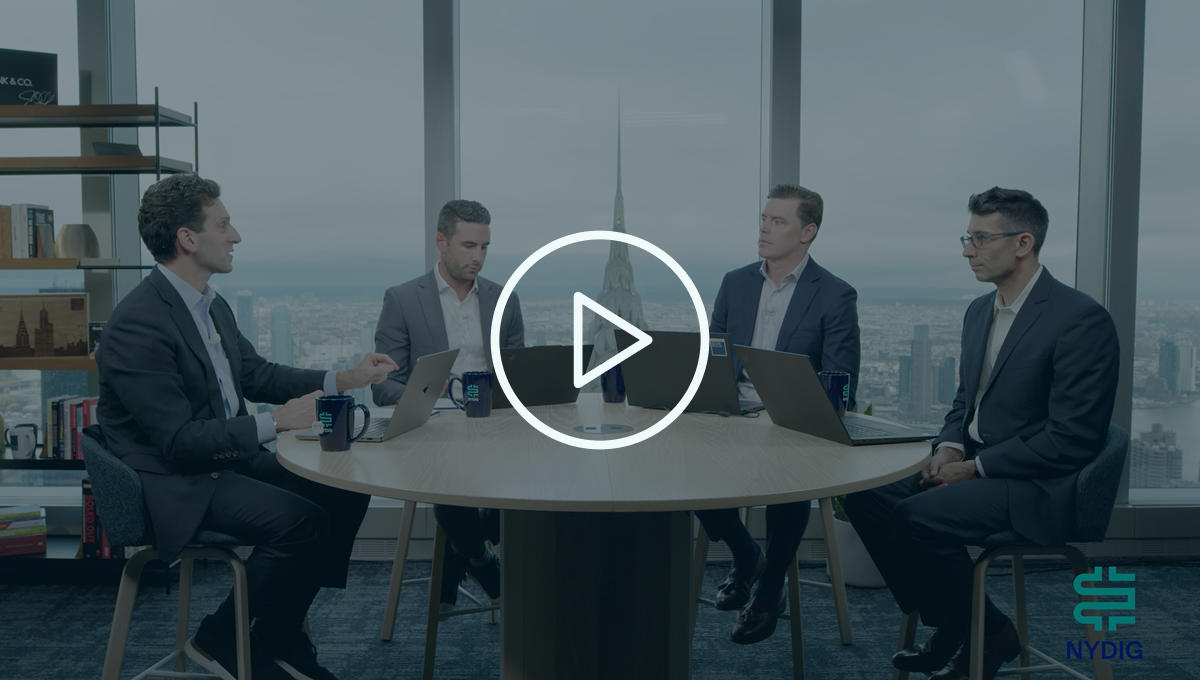IN TODAY'S ISSUE:
- A mystery emerges as Ordinals begins to exert impact on the blockchain.
- A rare technical trading indicator appears for bitcoin, but is it always positive?
Ordinals is Impacting the Blockchain, But Some Outcomes are a Mystery
Ordinals, the project that allows users to inscribe data into a satoshi, making them like NFTs, continues to be highly topical within the Bitcoin community. The project is still in its infancy, having officially gone live on the mainnet on January 20th, but its impact is already being felt and debated. We wrote about Ordinals last week from a philosophical, technical, and legal standpoint, but now with increased usage and the passage of time, we have some data to analyze. With the caveat that it is still too early to predict the long-term adoption and therefore lasting impact on Bitcoin that Ordinals will have, there are telltale signs that Ordinals is having an impact on Bitcoin’s blockchain as well as presenting some unanswered questions.
The first effect of Ordinals has been a growth in Bitcoin’s “mempool.” The mempool is the virtual waiting room of transactions that have been broadcast by users that are pending to be stamped into a block by miners. As the following chart shows, the amount of unconfirmed transactions has grown significantly recently, implying that Ordinals are taking up so much space that other transactions may be forced to wait longer or pay higher fee rates.

The second impact of the launch of Ordinals is the growth in the average size of blocks. Although the official maximum size of a Bitcoin block used to be 1MB, following the 2017 SegWit update blocks can now be much larger (up to 4MB) if data is counted as “witness” data, typically transaction signature data. Ordinals utilizes this by inscribing data in the witness section of a transaction, allowing blocks with Ordinals to be much larger than blocks filled with purely financial transactions. Prior to the launch of Ordinals, the largest block ever produced was 2.4 MB in size. But on February 1st, after the launch of Ordinals, the largest block ever was mined by Luxor. The block, 774628, was 3.96 MB in size (nearly reaching the 4 MB cap) and contained 3.94 MB of Ordinals inscription data with an image of a Taproot Wizard. As we see in the following chart, the average block size has indeed grown significantly, especially in the past week.

With an increasing volume of transaction data waiting in the mempool to be confirmed in blocks and increasingly large blocks being produced, we would generally expect that transaction fee rates increase, as users should have to pay more to slot their transactions into increasingly crowded blocks. However, this trend is not clear from the following chart, which shows the average transaction fee in satoshis (1/100 millionth of a bitcoin) per vByte (fees are most accurately denominated on a per-memory basis since that is the limiting factor for transaction throughput) have not risen.

One theory is that much of that discrepancy between block size and fee rates could be from a quirk in how large Bitcoin transactions are priced. Looking back at the details of the Taproot Wizard transaction, we can see that according to the data recorded in the blockchain, it had no fee attached to it. How does a transaction that takes up nearly an entire block but with no fee associated with it get mined into a block? The answer is direct coordination with a miner. Transaction over 100 kvBytes are considered non-standard and although they may be valid, will not be mined if posted to the mempool as nodes will not distribute the transaction throughout the network. These transactions, however, may be mined if directly coordinated with a miner. In the case of the Taproot Wizard, Luxor was likely given the transaction directly by the sender and paid off-chain to include it in a block template. When Luxor created its next block, the wizard was inscribed with no fee officially (and publicly) displayed in the blockchain, hence the zero fees and fee rate.
This could have important implications for miners. First, miners could receive increased fee revenue associated with Ordinals transactions, ones not directly observable from the block chain. Second, the appearance of non-standard transactions bifurcates fee markets, creating one which is visible to users through the mempool and blockchain, and another which is opaque and conducted directly between users and miners. This type of market structure may have unintended consequences, such as fee volatility or make judging appropriate fees more complicated. The flipside is that it may create for a more robust fee market, one that Bitcoin will increasingly need as the block subsidy declines and transaction fees are required to secure the network. Transactions like the Taproot Wizard are still exceedingly rare so this for the moment is still an edge case. If the popularity of Ordinals continues to grow, these types of market and technical dynamics may become more pressing discussion items.
A Golden Cross Appears, But is More Likely Indicative of Long-Term Returns
On Monday, traders cheered as a rare technical analysis indicator known as a “golden cross” appeared for bitcoin. A golden cross appears when a short-term moving average passes above a long-term moving average, in this case the 50-day moving average (DMA) and the 200 DMA. Traders typically interpret the indicator as a bullish sign, potentially marking a new uptrend for price. However, an analysis of the previous golden crosses in bitcoin’s history indicates that while they have often been harbingers of positive future price performance, that cannot be said for all investment time horizons.

Bitcoin has exhibited eight golden crosses in its price history (with the caveat that prices were not available for bitcoin until 2010 and not consistently until 2011, both well after the network launched in the beginning of 2009). Our analysis shows that indeed golden crosses can be positive indicators, but likely only over longer-term investment time frames, greater than 90 days. Over short-term investment time frames following a golden cross, 7 days and 30 days, bitcoin’s performance is much more mixed. More specifically, over the longer-term time frames, 90-, 180-, and 360-day investment horizons, bitcoin has a strong median return (we prefer median vs averages here because averages can be skewed due to outliers) as well as a much more consistently positive price performance (win rate). For the shorter-term investment horizons, 7- and 30-day, the median returns are negative, and the win rate is well below 50%. This suggests that the price of bitcoin struggles in the initial period following the appearance of a golden cross, but then goes on to better returns over the longer term.

Market Update

Asset prices were down across the board this week as investors judged the impact of future interest rate hikes and the overall economic health. After a stellar start to the year, bitcoin fell 7.9% on the week. While regulatory news was highly topical this week, we attribute much of the decline to short-term overbought conditions (see section on golden crosses) and a risk-off attitude across financial markets. Stocks were down as well with the S&P 500 falling 2.3% and Nasdaq Composite down 3.4%. Commodities were mixed this week with gold down 2.6% but oil up 2.9%. Bonds were down across the board with investment grade corporates bonds down 2.9%, high yield corporate bonds down 2.4%, and long-term US Treasuries down 3.5%. Real interest rates and inflation expectations rose on the week.
Important News This Week
Technology:
Lightning Network Reaches All-Time High in Bitcoin Capacity - The Block
What is Fedimint and Second-Party Custody for Bitcoin? - Protos
Investing:
Crypto Exchange Binance to Suspend US Dollar Bank Transfers This Week - CoinDesk
Tether Releases 4Q22 CRR Report - Tether
LocalBitcoins Will Discontinue its Service - LocalBitcoins
Deposit Tokens Emerging as a Foundation for Stable Digital Money - Oliver Wyman and Onyx by J.P. Morgan
Regulation and Taxation:
Ex-Coinbase Manager Pleads Guilty in Insider Trading Case - Reuters
Coinbase Claims SEC Overreach in NFT Insider Trading Case - Court Filings
SEC Division of Examinations Announces 2023 Priorities Regarding Crypto Assets - SEC
SEC Cautions Self-Directed IRAs and Crypto Assets - SEC
Companies:
EBay NFT Job Openings Hint At Web3 Showdown With Amazon - Blockworks
Hut 8 and US Bitcoin Announce Merger of Equals - Hut 8
Revolut Launches Crypto Staking - Decrypt
‘Sam? Are you there?!’ The bizarre and brutal final hours of FTX - FT
Upcoming Events
Feb 14 - January CPI reading
Feb 24 - CME Futures and Options Expiry




